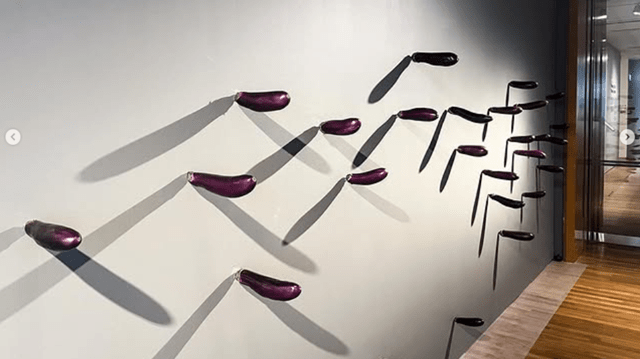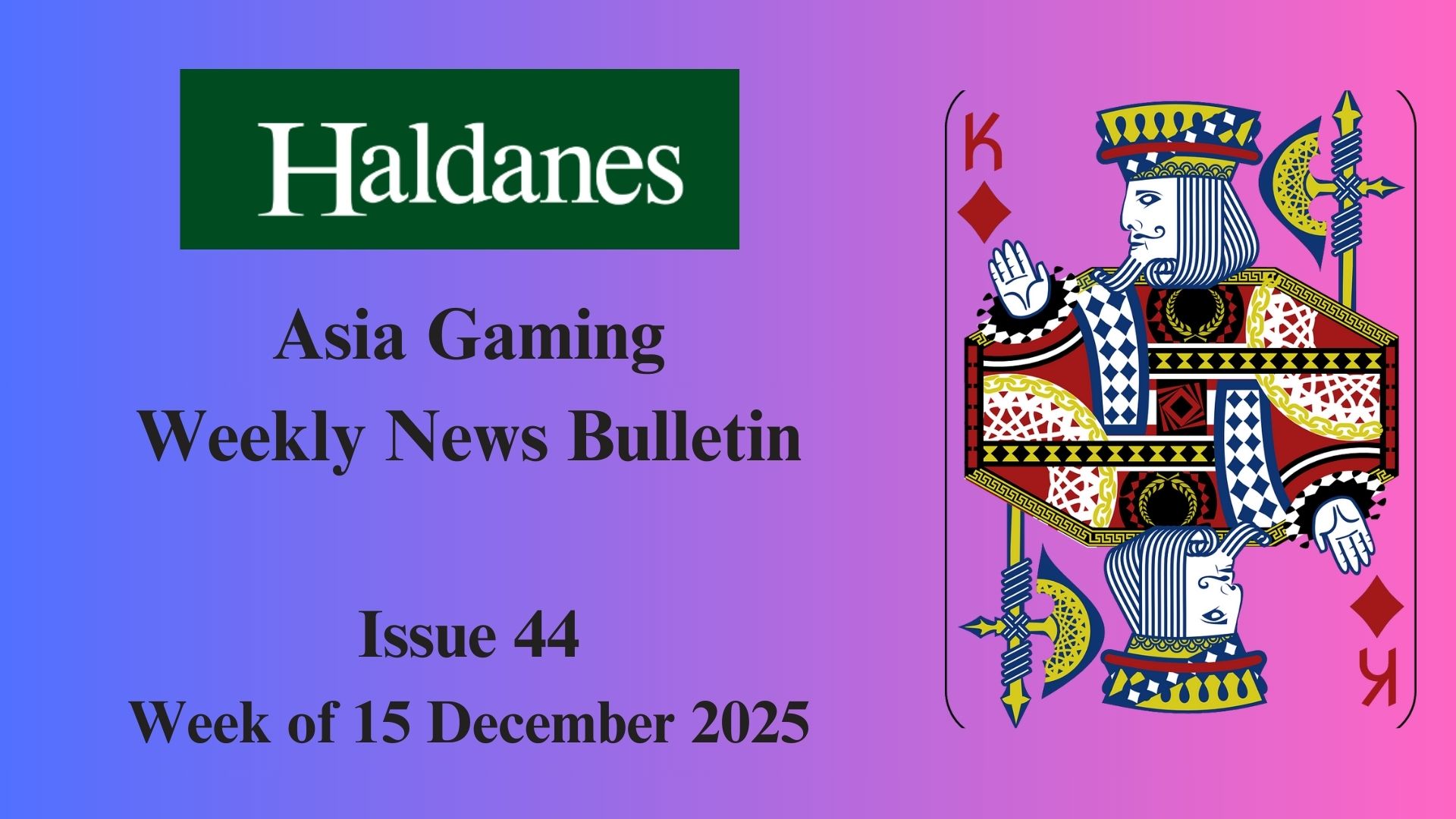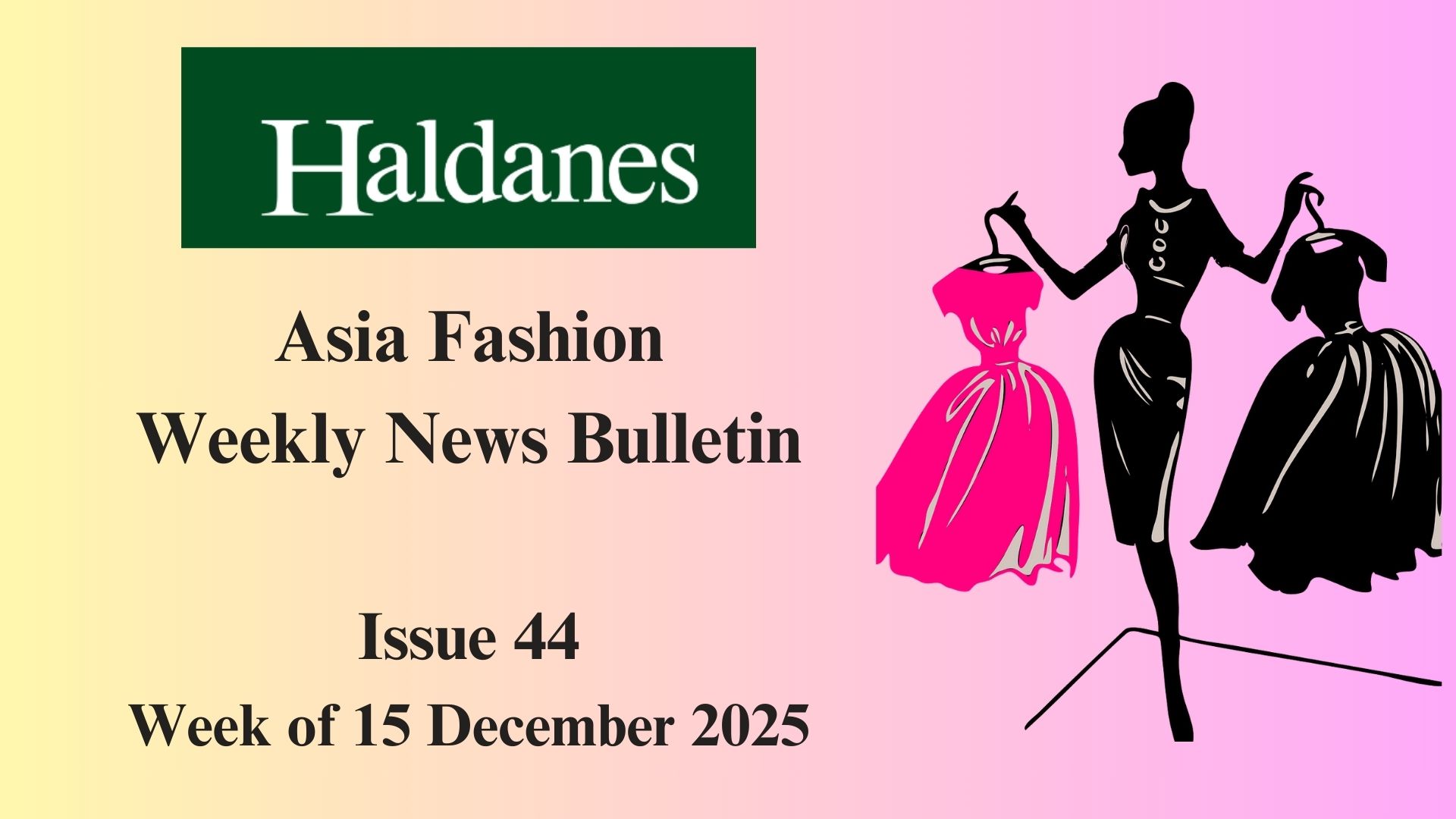Asia Art Weekly News Bulletin – ISSUE 26 Week of 4 August 2025
(1) Elaine Holt Steps Down as Sotheby’s Chairman of Modern and Contemporary Art, Asia after just one year
Sotheby’s announces Elaine Holt’s departure as Chairman of Modern and Contemporary Art in Asia after one year, with Jasmine Prasetio assuming interim leadership.
(2) Visitors vandalize art installation at National Gallery Singapore by stealing eggplants
Visitors stole eggplants of an art installation at National Gallery Singapore, prompting the museum’s urge for respectful engagement.
(3) Hong Kong welcomes hit Mughal exhibition with more than 100 works of art
The Hong Kong Palace Museum launched a landmark exhibition on Wednesday featuring over 100 Mughal-era treasures from the Mughal court – a Muslim dynasty encompassing most of present-day South Asia.
(4) Hong Kong-born artist’s works finally shown again 36 years after dying young
Late Hong Kong-born artist Josephine Cheung Shuk-fong had her artworks exhibited in New York through the effort of her friends and relatives.
(1) Elaine Holt Steps Down as Sotheby’s Chairman of Modern and Contemporary Art, Asia after just one year

(Photo Credit: The Value)
Sotheby’s has announced a leadership change in its Modern and Contemporary Art department in Asia, with Elaine Holt stepping down as Chairman of Modern and Contemporary and Deputy Chairman of Asia after just one year in the role. Holt, who joined the auction house in July 2023, was a prominent figure in Asia’s art circles. Having previously spent a decade at Christie’s, she held key positions including International Director of the Impressionist and Modern Art Department as well as Deputy Chairman for Asia. According to Sotheby’s, Holt’s departure reflects her desire to pursue new opportunities.
Jasmine Prasetio, Managing Director of Sotheby’s Southeast Asia, will temporarily lead the Modern and Contemporary Art department in Asia, relocating from Singapore to Hong Kong for the interim role. Prasetio, an Indonesian national with a background in economics, joined Sotheby’s in 2004 as a Southeast Asian art specialist and has played a pivotal role in expanding the house’s presence in emerging markets like Vietnam, Thailand, and the Philippines. Meanwhile, Alex Branczik, Chairman and Head of Modern and Contemporary Art, Europe, will continue overseeing the Asia team remotely from London, maintaining the strategic framework established before Holt’s appointment.
The auction house has yet to announce a permanent successor for Holt’s position. Branczik, who previously relocated to Hong Kong in 2021 to lead the Asia department before returning to London in 2024, remains responsible for the broader region, including Europe, the Middle East, and Africa. As Sotheby’s navigates this transition, the art market will be watching closely to see how the department’s direction evolves under its interim leadership and whether further structural changes lie ahead.
News Source: https://en.thevalue.com/articles/auction-personnel-change-elaine-holt-leaving-sothebys-hong-kong
(2) Visitors vandalize art installation at National Gallery Singapore by stealing eggplants

(Photo Credit: The Standard)
An artwork featuring 200 eggplants at the National Gallery Singapore (NGS) was recently vandalized by a visitor, prompting the museum to urge guests to respect the artworks. Created by Singaporean artist Suzann Victor, Still Life – which explores the futility of patriarchal expressions in social spaces through strategically arranged eggplants inserted into a wall – requires regular replacement of its organic components.
Despite clear “Do Not Touch” signage and staff patrols, the artwork’s striking visual appeal has drawn crowds for photos since its July debut, with some mistaking the eggplants as free to take. NGS reiterated its appeal for respectful engagement.
This incident follows past cases of artwork damage in Singapore. In 2014, part of Casey Chen’s paper wall installation at Jurong Point was torn off, while in 2000, Felicia Low’s Dragon sculpture in Chinatown vanished entirely, with fragments later found discarded.
News Source: https://www.thestandard.com.hk/world-news/article/308209/Visitors-vandalize-art-installation-at-National-Gallery-Singapore-by-stealing-eggplants
(3) Hong Kong welcomes hit Mughal exhibition with more than 100 works of art

(Photo Credit: Nora Tam)
The Hong Kong Palace Museum launched a landmark exhibition on Wednesday featuring over 100 Mughal-era treasures, including jewellery, weaponry, and architectural fragments of architectural history from the Mughal court – a Muslim dynasty encompassing most of present-day South Asia – opened in Hong Kong on Wednesday. As the travelling show’s first stop and sole venue in Asia, it features highlights from London’s Victoria and Albert Museum (V&A) – which attracted 150,000 visitors earlier this year – alongside pieces from Kuwait’s Al-Sabah Collection and other international institutions. Curator Emily Hannam emphasized the Hong Kong edition’s unique focus on exploring previously under-examined cultural connections between the Mughal and Chinese courts during the late Ming and early Qing dynasties.
The exhibition chronologically presents the artistic evolution across three Mughal emperors’ reigns (Akbar, Jahangir, and Shah Jahan), showcasing “arguably the wealthiest rulers in the early modern world”. One of the exhibits that illustrates the cultural exchange between the Ming and Mughal courts is a yellow-glazed porcelain dish produced in Jingdezhen, China, between 1488 and 1505. The piece entered Emperor Jahangir’s collection in about 1613, according to inscriptions on the bottom of the dish. The Ming dynasty prohibited the unauthorised production of yellow-glazed porcelain as it was designated for the exclusive use of the Chinese emperor, making its presence in Jahangir’s collection very rare.
Priced at HK$150 for adults with timed visits (HK$75 concessions), the exhibition runs until February 23 and represents Hong Kong’s first comprehensive survey of Mughal art. Exhibits in the show are bolstered by those from Kuwait’s Al-Sabah Collection, the UK’s Fitzwilliam Museum, Ashmolean Museum and Royal Asiatic Society, as well as the Hong Kong Palace Museum’s own collection.
News Source: https://www.scmp.com/news/hong-kong/society/article/3320975/hong-kong-welcomes-hit-mughal-exhibition-more-100-works-art?share=HY8IawZeKFqoFabclQogtm%2FoAiJk2z2ncnpcOXo9YFoJ%2F5EZJMVcUWiIzMnZ9nAG7kz4bi2mK9mDu6X5X8S8RoQkTaE8DhTO26VVZoqZjDc%3D&utm_campaign=social_share
(4) Hong Kong-born artist’s works finally shown again 36 years after dying young

(Photo Credit: Courtesy of Alisan Fine Arts)
Hong Kong-born artist Josephine Cheung Shuk-fong (1954-1989) was beginning to make waves in the art world when her life was cut short by lung cancer at age 35. After moving from Sheung Shui to Canada in the 1970s, Cheung developed a distinctive style blending abstract expressionism with figurative elements during her studies at Ontario College of Art (now OCAD University). Though her works were scattered after her death, they resurfaced in June 2024 through a commemorative exhibition at Alisan Fine Arts’ New York gallery, sparking renewed appreciation for her brief but significant career.
Documentary filmmaker Nancy Mei-yu Tong, Cheung’s close friend since their Toronto student days, spent years fulfilling Cheung’s final wish to have her paintings sold to fund scholarships at her alma mater. This effort gained momentum after Lui’s 2021 death, when his widow and Cheung’s family unexpectedly reunited two collections of her work.
The New York exhibition showcased 23 works demonstrating Cheung’s rapid artistic maturation, from early color-field experiments to her final, darker In Limbo series. Though unaware of her terminal illness while creating these pieces, their somber tones coincidentally reflect her premature passing. Alisan’s Chen highlights how Cheung’s rediscovery represents broader recognition for overlooked Asian-American artists, with proceeds funding an OCAD U scholarship in her name. As Chen noted, these artists are now being valued not for cultural tokenism, but for their authentic contributions to art history.


